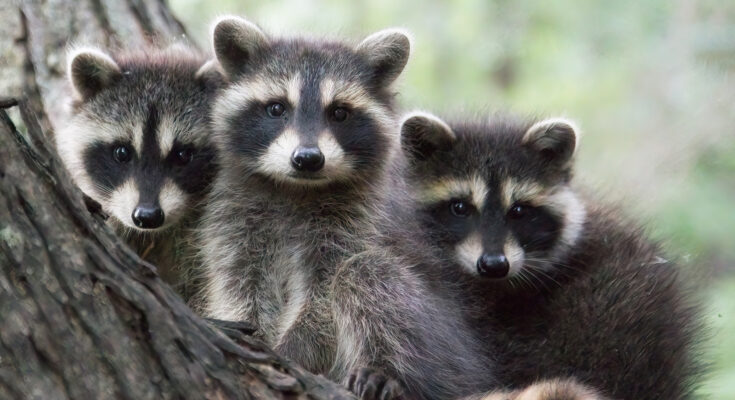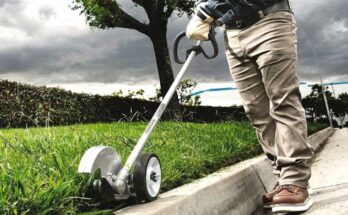The Dos And Don’ts Of Humane Pest Removal (& When To Hire A Pro)
We may receive a commission on purchases made from links.
Taking care of your home and yard often means dealing with plenty of unwanted pests. From ants in the kitchen to raccoons in the attic — you’ll run into them all. While it’s important to protect your space from damage and your health from any animal-borne diseases, it doesn’t mean the solution has to be harmful to the animals or to the environment. That’s where humane pest control comes in. This focuses on resolving pest problems in ways that minimize suffering and avoid unnecessary harm.
You might still want to get rid of insects like roaches, ants, or wasps, but it’s important to use targeted and environmentally-responsible methods. Broad-spectrum pesticides, for example, can also kill beneficial insects like bees and butterflies, contaminate soil and water, and disrupt the larger ecosystem. Instead, you can naturally repel these bugs and reduce the impact on the surrounding environment.
When it comes to larger animals like rats, mice, snakes, or birds, humane control usually means focusing on prevention, exclusion, and occasionally, safe relocation. Sometimes, when an animal is badly hurt or causes serious danger to itself or others, it may need to be put down. In these situations, it’s important to do it quickly and ethically, and only after exploring all other choices. These are the best dos and don’ts to know, and when to call it quits and hire a pest control professional instead.
Do: The most humane pest removal might be no removal at all
Sometimes, animals you might consider to be annoying pests are really just urban wildlife going about their day. In these instances, the most humane thing you can do for these creatures regarding the removal process is to just leave them alone. This is especially true if they aren’t causing harm or creating danger, but you just don’t like having them around. Local ecosystems can be very delicately balanced. Removing just one link in the chain can have a negative ripple effect that you didn’t intend or imagine.
For example, the city of Austin, Texas is home to more than 1.5 million Mexican free-tailed bats. These days, tourists gather to watch them on the Congress Avenue Bridge, and they are a major attraction. Yet in the past, locals have hated having the creatures near their homes. So, they removed them, but it didn’t work out as expected. “People got rid of their bats as they were feared and reviled, but found later an explosion of mosquitoes and related diseases,” UT Professor Bekessy told ABC Australia. “Now the bats are a welcome feature of the Austin night sky, even generating money from tours of their bridge nesting sites. Really reflect on these ‘pests’. You might miss them when they’re gone.”
Do: Seal off food sources and see if the critters move on by themselves
Most pests, like raccoons, possums, and rats, are opportunistic eaters. If your property is one where they are easily fed, they will stick around, making nests for themselves in your attic and decimating your pet food storage. However, if food is harder to come by, many of these animals will move on by themselves as they search for their next meal. So, consider restricting access to food sources as a first line of defense. This means containing all your household trash, plus pet and livestock food. If you keep animal food outside, be sure it’s a bin that can only be opened by humans, like the Iris USA Airtight Dog Food Storage Container.
You could also upgrade your garbage bin to one like the Keter Rockford Resin 38 Gallon Outdoor Kitchen Trash Can with Lid. Or, go a bit more rustic by placing a brick on top of the lid of your current one when it’s closed so clever animals can’t flip it back. If you have a rat problem, clean the bin itself after trash day, too. Spray or wipe it down with a solution of bleach as it can keep pests out of your trash cans. “If you keep those cans really clean, and you wipe them down with any disinfectant, the rat is not gonna gnaw through that plastic,” Rodentologist Bobby Corrigan told the Washingtonian.
Do: Pest-proof your home, but check for and remove any animals first
Prevention is often the most humane thing you can do for local wildlife. By making your home inhospitable for wild animals, you can prevent them from becoming reliant on humans as a source of food or shelter. You can easily do this as a DIY project. A good place to start is by making sure your windows, doors, and vents (especially in the attic) don’t have entry points. Products like this 6-Pack of 12×8-inch Wire Mesh Screens or Funmit’s 4″ Dryer Vent Cover for Exterior Wall allow you to block any openings. Using caulk or concrete to seal up gaps near doors, in walls, or near the foundation is also helpful for exclusion.
That said, do check that you are not trapping an animal in your house when you complete this step. If you fail to complete a thorough check, you might end up trapping a possum or raccoon in your attic, then dealing with carcass removal when the smell begins to waft down into your home. In addition, if you are having a bee problem, never plan to just seal them up inside the wall and hope they’ll die out. Not only is this inhumane due to the intention of starving them, but bees also tend to survive this and find a way back out. And when they do, they will be angry and out for vengeance.
Do: Make sure any professional you hire also uses humane methods
Keep in mind that not all pest control companies are the same. You might think that hiring a professional to help you with animal control on your property is always going to be the best, most ethical option. However, it is essential to research beforehand to choose providers who emphasize humane practices. The best way to do this is to ask questions about exactly how this company plans to remove the animals. If they have a website, the answers might be posted there. If not, speak to a representative before you hire them.
Be sure you understand the outcome for the animals. Ask if the animal will be killed, and if so, how and why. What will the company do about any babies left behind after the removal or euthanasia of the parent? Does the company have insurance and the appropriate state licensing? Do they help with exclusion practices? And do they rely on pesticides or natural methods? Understanding this will give you peace of mind, as you can ensure the professionals you are working with align with your morals around the treatment of all animals.
Do: Use natural deterrents
For smaller pests, like insects, you might be tempted to use pesticides and call it a day. However, using these chemicals can have long-reaching effects beyond just killing localized bugs. They can pollute water, which harms wildlife that you never meant to impact. Plus, they can cause diseases like cancer in humans. Nothing about this process is humane. Instead, there are many non-chemical options for organic pest control that can kill targeted species quickly. They are more humane because they won’t have these knock-on effects on the rest of the ecosystem.
If you have a snail or slug problem, reach for a non-toxic option like this 4-Pound Bag of Diatomaceous Earth Food Grade by Harris. The powder absorbs the liquids from these animals, drying them out and killing them. The powder itself needs to be dry to work effectively, so be sure to re-apply it to problem spots after heavy rain or if you’ve watered your yard. Next, consider neem oil like the Natria Spray for Plants if you have an issue with aphids, spider mites, or gnats. It works because neem oil has azadirachtin in it. This is a substance that makes it harder for these pests to eat. It also impacts their hormonal systems, so they cannot reproduce as rapidly, which gives you a fighting chance.
Don’t: Use glue traps
Glue traps cause pain, suffering, and injuries to animals well past their intended scope. Any animal that crosses their path can get stuck, not just your intended target, which can negatively impact the ecosystem in your yard as a whole. You might even accidentally harm your pet! These traps are not humane just because they kill animals, but because they also make it painful and scary the entire time they are dying. They can even cause them to rip off their fur and feathers or to break their bones while they struggle to break free.
Not only this, but even the CDC advises that these traps are not safe for humans, either, because animals will typically soil themselves while trapped. Then, the pathogens in the excrement can make you sick if you touch them or breathe them in. All of this has led many countries to ban their use. While they’re still legal in the United States, the traps cause so much pain and suffering that it is simply not worth it to seek them out, even for serious pest problems.
Do: Use live traps for rats and mice
Spring traps, or kill traps, are another common option people might reach for to take care of a rodent problem on their property. However, they’re controversial because if not deployed correctly, they can cause great suffering to the animal instead of killing it instantly. For just a few mice, or an isolated rodent-spotting, consider a catch and release method like the Motel Mouse Humane No Kill Live Catch and Release Traps. However, you must check them at least a few times a day (if not hourly) so the trapped animal doesn’t die of stress or starvation while waiting to be relocated outside.
Yet, as you often cannot relocate hoards of mice, kill traps might be your only option if you have a big or long-term infestation. However, select them carefully to avoid undue suffering. Humane traps will have a strong spring that kills the animal instantly, instead of just hurting or restraining it, leading to cruel distress. They should be strong enough to easily snap a toothpick in half on the first try. Products like Victor Mouse Traps M035-12 are reliable options.
Don’t: Use live traps for raccoons or possums on your own
Using a larger live trap for raccoons or possums is possible and technically humane, as long as they are not waiting too long to be released. However, some states have rules that the animal cannot be released within a certain distance of the capture point. It also might need to be put down due to the risk of spreading rabies. For these larger animals that are likely going to attempt to re-enter where you got them from, the most humane thing to do is prevent them from entering your property in the first place. Otherwise, they’re looking at euthanasia for simply nesting in your attic or eating your cat food. Once you have removed the animal from your attic, your shed, or your garage, focus your energy on making your property as uninteresting to them as possible.
Tips for keeping pests out of your garage storage include nixing cardboard boxes and plastic bags, and instead using more sturdy, hard plastic bins like the Iris USA 13-Quart Stackable Plastic Storage Bins with Locking Lids. If you’re struggling with the animals’ behavior, consider using a professional pest removal service that has a license for relocation that is a little farther away. The English word “raccoon” is based on the Powhatan word that means “animal that scratches with its hands.” The warning for how feisty they are is right there in the name, so for most laymen, dealing with them is best left to professionals.
Do: Consult local wildlife agencies if dealing with protected species
The U.S. Fish & Wildlife Service keeps a list of 1,519 species of interest, known as the ECOS, Environmental Conservation Online System. Some of the animals are officially listed as endangered species, while others are threatened and might become endangered. You should always hire a professional if the animal you’re having trouble with appears on this list. Killing, repositioning, or harming one of these animals in any way is a crime that can be prosecuted in both civil and criminal court. The penalties are hefty, including time in prison and fines up to $50,000.
While these animals are not considered pests by most, they still might not be welcome on your property, or they might arrive sick or injured and need help. Handling these cases typically requires trained wildlife handling experts and more legal compliance. So, working with a local wildlife agency is your best bet for an ideal outcome, as they have the correct licenses and insurance for such cases. To discover animals on this list, the Center for Biological Diversity has an interactive map that allows you to search by county.
Do: Hire a pro to handle relocating potentially dangerous species (like venomous snakes and aggressive bee colonies)
There are certain animals that you shouldn’t attempt to deal with yourself. For example, bees are an important part of any ecosystem. If you find a colony living in your walls or anywhere else on your property, it’s important to immediately hire a professional bee removal service. These companies have the training needed to effectively relocate the entire hive without harming it, as the worker bees tend to follow their queen. If you attempt to remove them by spraying or smoking them, they may swarm and harm you.
There are six snakes you don’t want to see in your yard if you live in the USA because they are venomous or are large enough to harm pets or small children. While many snakes should move on by themselves, sometimes they do find their way inside, and you might be left with no choice but to remove them. Hiring a professional means they will be able to identify it accurately. If it’s a nonvenomous snake, they may be able to release it somewhere nearby, where it can help control rodent populations.
Don’t: Disturb nests or dens during breeding seasons
Interfering with young animals can be illegal and harmful. The most humane thing to do is leave the nest be and see if the animals move along on their own once grown, then seal off the nesting area to prevent reuse. In many states, if the parent is dead or missing, it is illegal to care for or capture the babies without a permit.
Instead, contact your local wildlife rescue for the help of a licensed carer and advice on what to do in the meantime. This goes for bunnies, possums, and especially birds, as the Migratory Bird Treaty and Endangered Species Act make it illegal to kill certain birds or destroy eggs or nests without a permit. In some states, this permit is free and is based on receiving education. For example, in Illinois, the Department of Natural Resources (IDNR) will issue the papers after a discussion with a biologist to understand the specifics of your situation.
Do: Seek professional advice before relocating animals
If you can capture an animal you consider a pest on your property, you might think that dropping it off in nearby wilderness is a win/win. However, animals don’t always thrive in these situations as they are unaware of their new surroundings, making it inhumane. Plus, in some states, it’s even a crime (misdemeanor) to remove non-protected species like coyotes, raccoons, or foxes on your own, even if you do so without “harming” them. In other states, some animals can be trapped and relocated, as long as the person doing so has written permission from both the state parks and wildlife office, as well as the person or entity who owns the release land.
For these reasons, if you plan to relocate an animal, it’s always best to seek professional advice before you take action. Start by looking at your state’s parks and wildlife office website, as it likely has the laws around these situations clearly listed. If not, giving the team a call is the next best option. That way, they can ensure you don’t cause undue harm to animals or accidentally earn yourself a criminal record.



